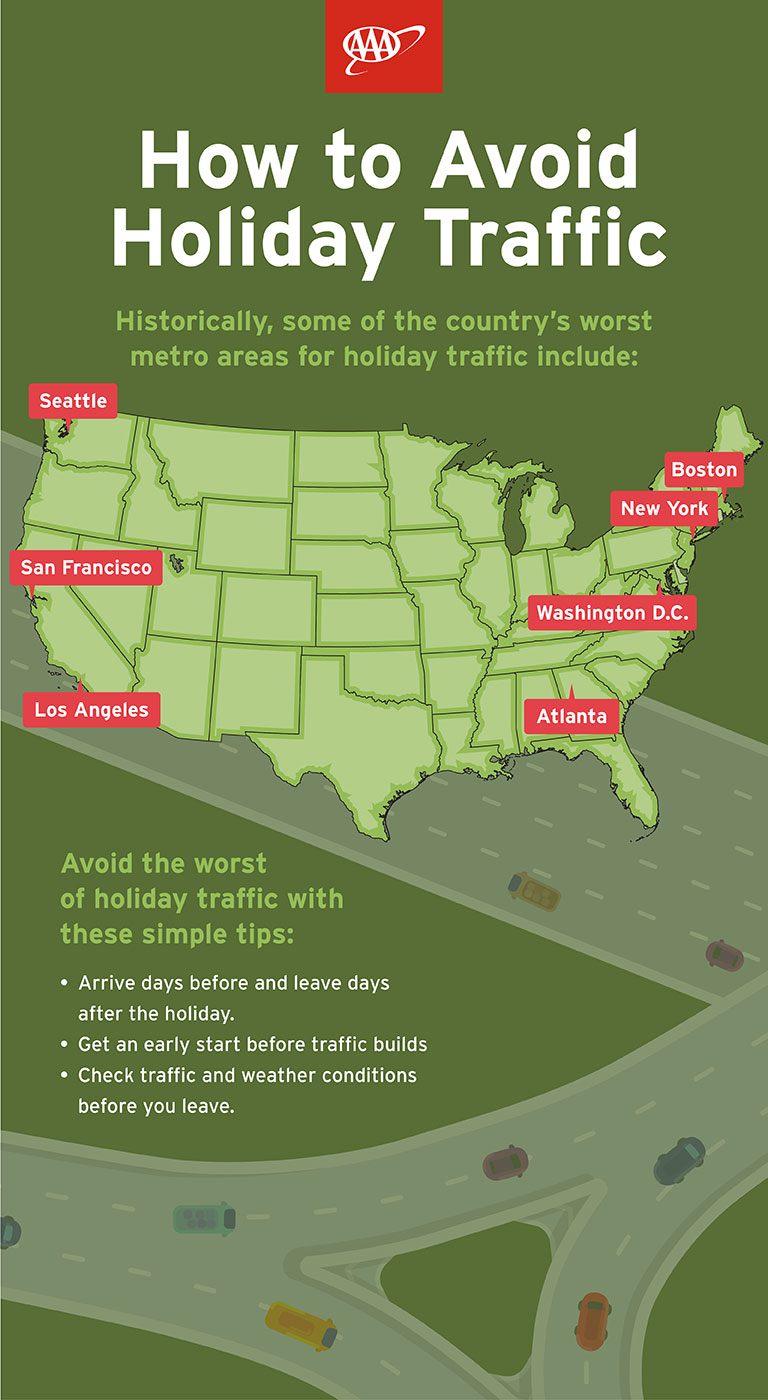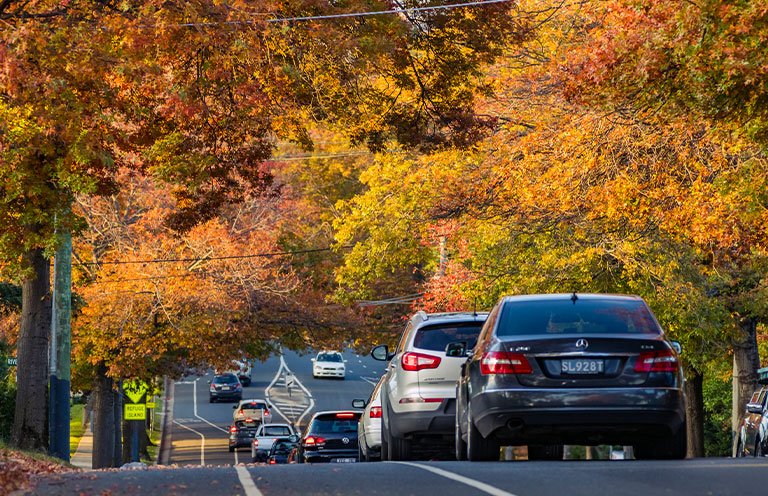Holiday Travel: How to Avoid Thanksgiving Traffic
Hitting the road for Thanksgiving? Here’s how to avoid bad traffic—from steering clear of certain metro areas to timing your travels during off-peak periods



Holiday travel time is almost here, and with it, millions of Americans will be traveling near and far to visit friends and family. In fact, AAA projects nearly 80 million travelers will be leaving town, setting out 50 miles or more from home over the Thanksgiving holiday; that’s up by about 1.7 million people compared with last year. Most of them—a record 71.7 million—will taking to the highways and byways, with road-tripping being the most popular form of travel.
While roadways across the U.S. will see a significant increase in traffic volume, you can alleviate some of the traffic headaches with some careful planning. Here’s how.

Know which metro areas to avoid
Historically, traffic congestion increases around the holidays anywhere up to 80 percent, depending on where in the country you are driving.
Every year, INRIX, a provider of transportation data and insights, highlights highways that are especially prone to congestion. Among some of the country’s worst metro areas for holiday traffic congestion are Los Angeles, Seattle, and New York. The metro areas of Boston, San Francisco, Philadelphia, and Washington, DC, are also notoriously congested at peak holiday travel times.
Traffic is not only a factor for fully road-based trips. If you fly into a major airport and pick up a rental car, it’s important to be aware of traffic conditions in that region ahead of time, especially since you may be unfamiliar with the area, including with alternative routes to avoid congestion.
For those heading on vacation for the holidays, warm-weather destinations, theme parks, historic sites, and cruise port cities traditionally top the list of holiday hot spots. That usually translates into traffic congestion in metro areas such as Orlando, Fort Lauderdale, Miami, Anaheim, Tampa, New York City, Las Vegas, and Atlanta, just to name a few.

Plan for off-peak travel times
To avoid the worst traffic, try to arrive at your destination days ahead of the actual holiday and linger long afterward to avoid driving on the roadways with everyone who must immediately return home after the holiday weekend.
If you do have to travel immediately before a holiday, historically, getting an early start will help for a smoother journey. INRIX data shows that the Tuesday and Wednesday afternoon before Thanksgiving are typically the busiest days to drive, especially between the hours of 1 p.m. and 7 p.m. If you must travel on these days, get an early morning start—before 10 a.m.—before traffic builds as the day continues.
Traffic on Thanksgiving day itself is usually light, with minimal traffic expected. If you’re hitting the road the day after Thanksgiving, which is Black Friday in the retail world, leave later in the afternoon, after 1 p.m. If you’re traveling Saturday or Sunday of Thanksgiving weekend, set out before 1 p.m. to avoid the worst Thanksgiving traffic. And if you’re headed out on the highways on the Monday after Thanksgiving, leave before 8 a.m. or after 7 p.m. to avoid the mix of holiday and workday travelers.

Check conditions before you go
Regardless of the roads you plan to travel, check for weather and traffic before leaving. You can check navigation apps like Google Maps or Waze for real-time traffic conditions, or use satellite services like SirusXM Traffic. You can even check conditions well in advance if you enter your desired arrival time and then plan when to leave based on expected traffic conditions.
Also, check your state's Department of Transportation (DOT) website for information on current road incidents and construction projects. Ohio’s DOT website and its OHGO app, for example, allow motorists to access traffic camera images to see what traffic and weather look like across the state.
With some strategic planning, including choosing the best travel days, times and routes to travel, you can arrive at your holiday destination not only earlier but also less stressed.
